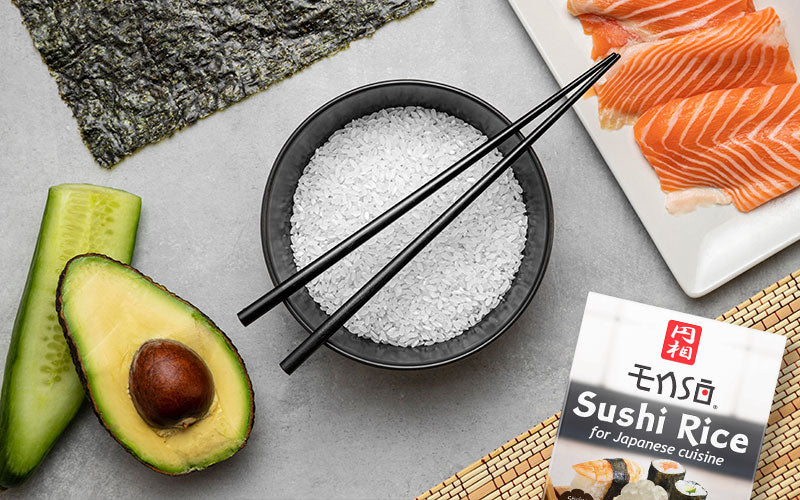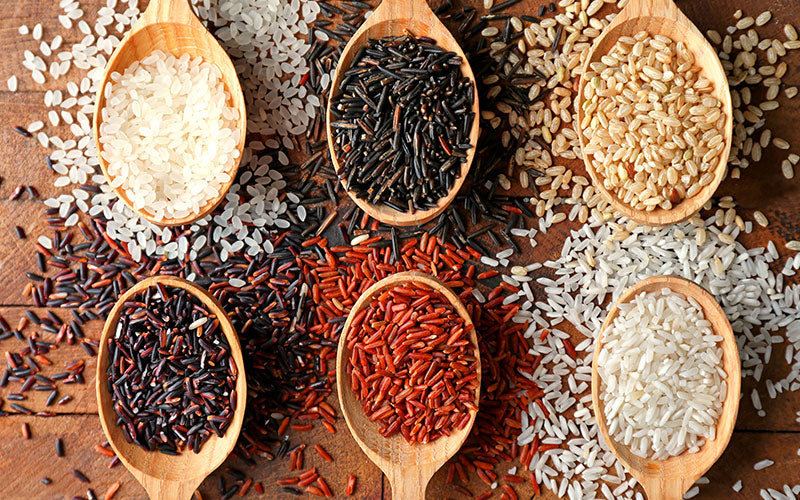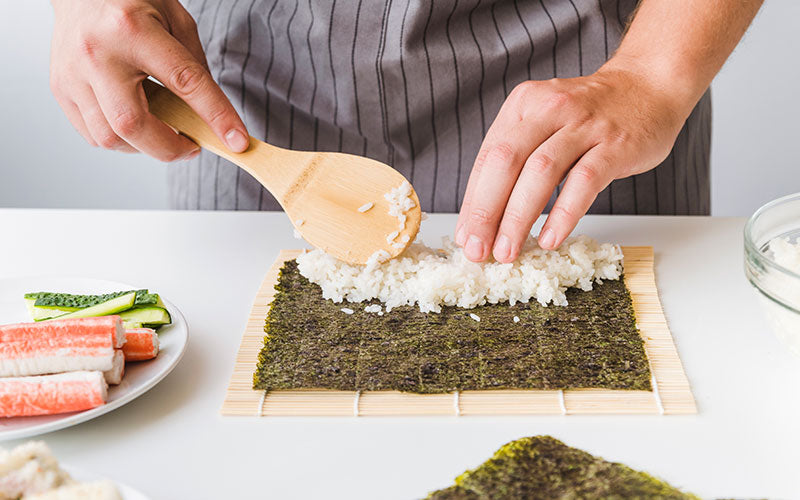The Sticky Mystery: Sushi Rice vs White Rice

Sushi rice and white rice are two different types of rice with distinct characteristics. While they may look similar, there are specific qualities that set them apart, especially in terms of stickiness. We will show you the difference between these two.

The world of rice is a vast and intricate one, filled with a myriad of grains with each possessing their own unique characteristics. From the long, aromatic basmati often found in Indian cuisine to the short, sweet glutinous rice used in Japanese cuisine, each type of rice has its place in the culinary landscape. But today, let's unravel a specific sticky mystery - the difference between sushi rice and white rice. While the untrained eye may see little difference between the two, those in the know understand that sushi rice and white rice have distinct properties that make them suited for different dishes.
Understanding Rice
Rice is a versatile grain that can be used in a wide array of dishes, from mains to desserts. Rice comes in many varieties, each with its distinct texture, flavor, and nutritional content. The classification of rice is based on the size of the grain - long, medium, and short. This difference in size impacts the texture and stickiness of the cooked rice. For instance, short-grain rice is typically stickier and softer than its long and medium counterparts. Apart from the size, rice can also be classified based on its level of processing. This leads us to the distinction between white rice and brown rice. While brown rice is a whole grain with only the outer husk removed, white rice is further milled and polished, removing the bran and germ. This process gives white rice its characteristic lightness and fluffiness but also reduces its nutritional content.

Sushi Rice
Sushi rice, also known as Shari in Japanese, is a type of short-grain Japanese rice known for its sticky texture when cooked. This stickiness is essential for sushi, as it allows the rice to hold its shape when molded into sushi rolls or nigiri. The stickiness of sushi rice is due to its high content of a type of starch known as amylopectin. This starch makes the rice grains cling together, creating the perfect texture for sushi. Apart from its stickiness, sushi rice is also characterized by its slight sweetness. This comes from the addition of a mixture of rice vinegar, sugar, and salt after the rice is cooked. Although sushi rice is integral to Japanese cuisine, it's not exclusive to it. This versatile rice can be used in various other dishes that require a sticky and slightly sweet rice.

White Rice
White rice, on the other hand, is a more generic term that refers to any rice that has undergone a milling process to remove the bran and germ, leaving only the white endosperm. This process gives white rice its fluffy and light texture, making it a versatile base for a variety of dishes. There are different types of white rice, including long-grain, medium-grain, and short-grain, each with its own properties. Long-grain rice, for instance, is known for its firm and separate grains when cooked, while short-grain white rice tends to be stickier and clump together. White rice is a staple in many cuisines around the world, from the aromatic jasmine rice used in Thai dishes to the long-grain basmati rice often found in Indian and Middle Eastern cuisines.

Sushi Rice
While sushi rice is a type of white rice, not all white rice can be used as sushi rice. The main difference between sushi rice and white rice lies in their texture and flavor. Sushi rice is stickier and has a slightly sweet flavor due to the vinegar mixture added after cooking, while white rice tends to be fluffier with a neutral taste. The type of starch present also differentiates the two. Sushi rice is high in amylopectin, which gives it its sticky texture, while white rice has a balanced level of amylopectin and amylose, which makes it less sticky. Additionally, sushi rice is typically a specific type of short-grain rice known as Japonica rice, while white rice can be any type of rice - long, medium, or short - that has been milled and polished. Sushi rice requires specific preparation to achieve its desired sticky texture. It is rinsed multiple times to remove excess starch before cooking. Then, it is cooked using a specific ratio of water to rice and a gentle cooking method that allows the grains to retain moisture and stick together. White rice, on the other hand, is typically rinsed once or not at all before cooking, and the cooking method can vary depending on the desired texture.
The Role of Sushi Rice in Japanese Cuisine
Sushi rice plays a pivotal role in Japanese cuisine. It's the foundation of sushi, a dish that has become synonymous with Japanese food culture. The stickiness of sushi rice allows it to be shaped and molded, making it perfect for creating the various forms of sushi, from rolls to nigiri. Moreover, the slight sweetness of sushi rice complements the flavors of the other ingredients in sushi, such as the freshness of the fish and the tanginess of the pickled ginger. It's this delicate balance of flavors that makes sushi such a beloved dish worldwide. Beyond sushi, sushi rice is also used in other Japanese dishes, such as onigiri (rice balls) and chirashi (scattered sushi bowl). Its stickiness and slight sweetness make it the perfect base for these dishes.

The Art of Sushi Making: Using the Right Rice
The art of sushi making is a delicate process that requires precision, skill, and the right ingredients. And the most vital ingredient is the rice. Using the right rice - sushi rice - can make or break your sushi. Sushi rice's sticky texture allows it to hold its shape, making it possible to create the various forms of sushi. Its slight sweetness also balances out the flavors of the other ingredients. So, whether you're an aspiring sushi chef or a home cook wanting to try your hand at sushi making, remember that using sushi rice is a non-negotiable part of the process.

Make Your Choice
So, sushi rice or white rice? The answer depends on what you're cooking. If you're making sushi or any dish that requires a sticky and slightly sweet rice, then sushi rice is your best bet. But if you need a versatile, fluffy rice that can accompany a variety of dishes, then white rice is the way to go. Understanding the differences between these two types of rice can enhance your culinary skills and broaden your cooking repertoire. So, go ahead and experiment with both sushi rice and white rice. After all, variety is the spice of life in the culinary world.

